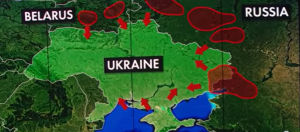
Unic Press UK: Food crises worsened in 2016 when compared to the figures of 2015, and things are likely to worsen in 2017, the Food Security Information Network (FSIN) said.
“Globally, 108 million people in 2016 were reported to be facing Crisis level food insecurity or worse (IPC Phase 3 and above). This represents a 35 percent increase compared to 2015 when the figure was almost 80 million,” the FSIN affirmed in its publication Global Report on Food Crises 2017.
A number of countries, including Haiti, Ethiopia, Malawi, Zimbabwe, Mozambique, Nigeria, Yemen, Syria, South Sudan, Afghanistan are facing severe food crises. There is a high risk of famine in 2017 in Nigeria, Yemen, South Sudan and Somalia, the FSIN said.
Excerpts of the “Global Report on Food Crises 2017”, in the case of Nigeria, reads:
“The nutrition situation was already alarming in Nigeria at the end of 2015. In five of the northern states, global acute malnutrition (GAM) prevalence was estimated at over 10 percent, and stunting prevalence at over 40 percent, reflecting the nutritional vulnerability caused by chronic food insecurity and poverty (see map). The situation worsened in 2016 because of the continuing conflict and Boko Haram-related violence in the northeastern states. GAM prevalence is at the Crisis or Emergency threshold in the states of Borno, Katsina, Kebbi, Sokoto, Yobe and Zamfara; and at the Stressed threshold in Benue, Niger, Plateau and Taraba. Peaks of extremely high GAM prevalence have been observed in newly liberated territory and IDP camps.” (FSIN: March 2017)
FSIN listed two main drivers of food insecurity in 2016:
- Armed conflict: Nigeria, Yemen, Syria, South Sudan, Afghanistan
- Natural disasters: Haiti, Ethiopia, Malawi, Zimbabwe, Mozambique




